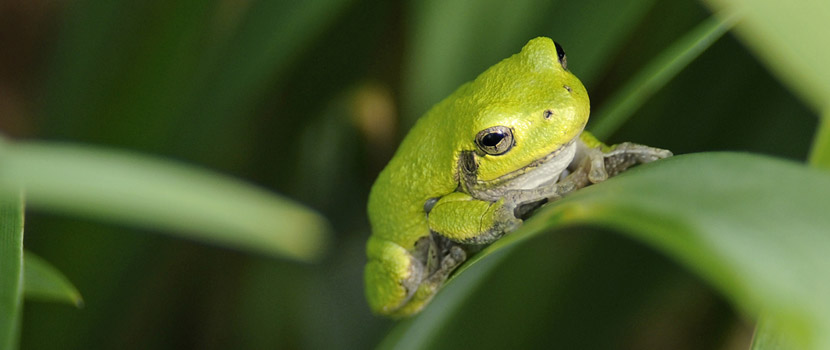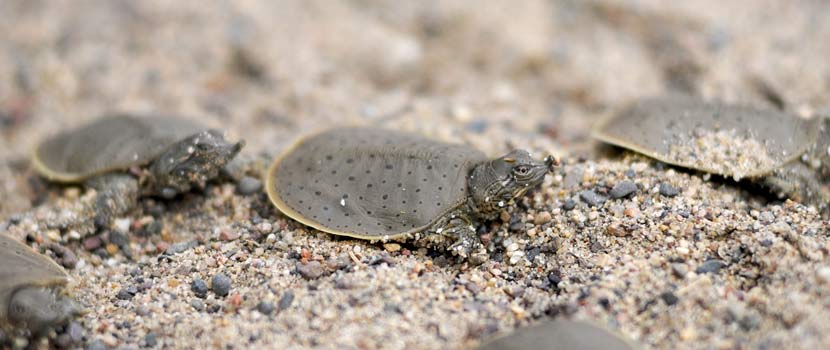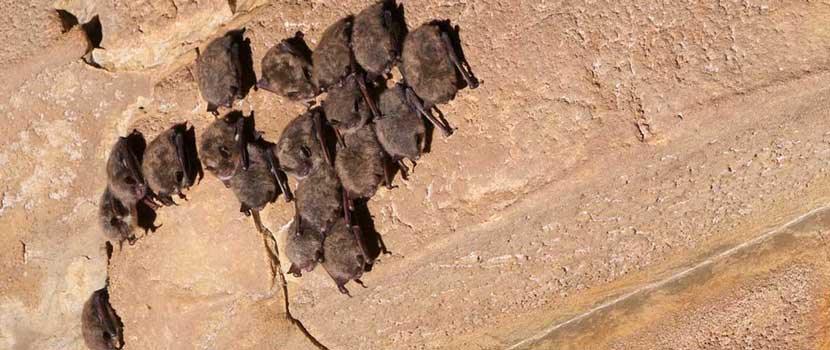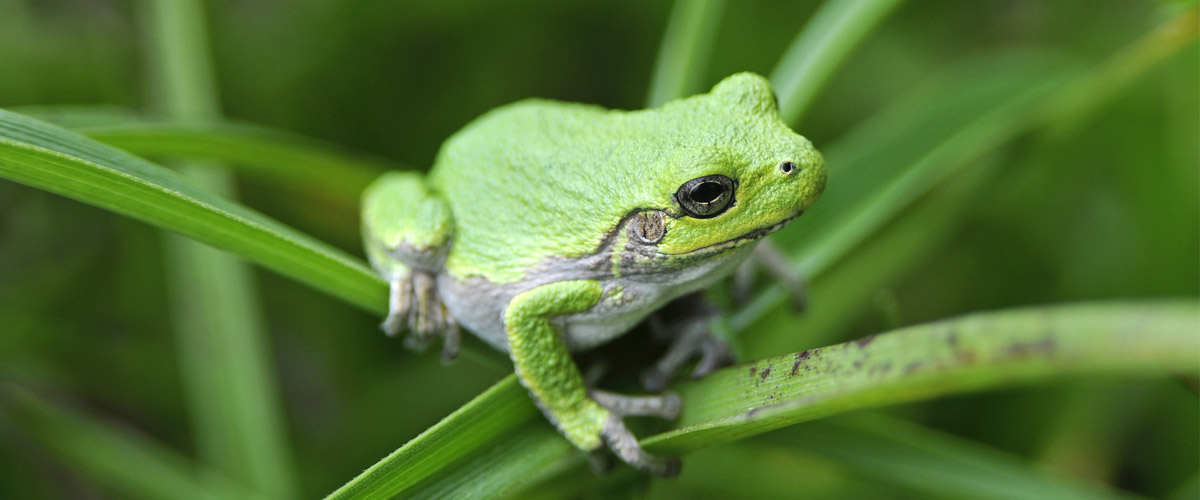
There are 14 species of frogs and toads in Minnesota, and eight of them can be found in Three Rivers Park District. While all of them stay in Minnesota for the winter, they have very different approaches to surviving the cold.
Many of us have learned that frogs spend the winter buried in the mud at the bottom of a lake. This is partially true for some species, but not for most of the species we find in Three Rivers.
The frogs in Three Rivers have three hibernation strategies: bury on land, freeze in the leaf litter, and spend the winter under water.
Burrowing Below the Frost
American toads are the only species in Three Rivers that spend the winter underground. They burrow in sandy soil below the frost line, using their back feet to do the digging.
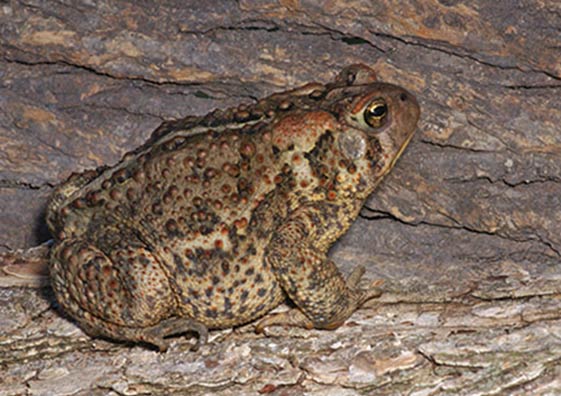
How deep they go varies from year to year depending on the temperatures and snow cover. They will burrow anywhere from 6 inches to over 3 feet deep.
American toads cannot freeze and survive, so they need to stay below the frost line all winter. They tend to stay within a couple of inches of the frost line and will move up and down throughout the winter as the frost line changes.
Frozen Frogs Discovered in Three Rivers
The most common method of winter survival among frogs in Three Rivers is to freeze in the leaf litter. The gray treefrog, Cope’s gray treefrog, spring peeper, boreal chorus frog and wood frog all take this approach.
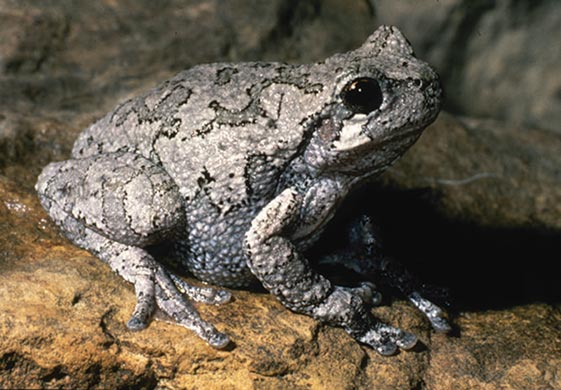
Their unusual overwintering strategy was first documented right here in Three Rivers Park District at Elm Creek Park Reserve by Bill Schmid from the University of Minnesota in the 1960s. Before that discovery, scientists did not know where these frogs went in the winter.
Dr. Schmid was helping a student collect land snail shells in the winter and found what he thought was a rock shaped like a treefrog. After a while, he realized it was a frozen frog and started doing research on how and why it happened.
His research found that some frogs accumulate glycerol their bodily fluids during the fall when the temperature begins to cool. This protects the cells from rupturing when the frogs partially freeze.
When a frog begins to freeze, its liver converts the glycerol into glucose. The glucose is then circulated to the frog’s major organs so that ice crystals do not form in its organ tissues. Although its organs are protected, ice does form in the frog’s body cavity around its organs and between its muscle cells.
Up to 65 percent of a frog’s total body water will freeze in the winter. Schmid (1982) found that the frogs can be cooled down to 19°F for weeks and survive.
Underwater Winter
The last group of frogs in Three Rivers, which includes the northern leopard frog and green frog, spends winters under water in lakes, ponds and rivers. These frogs tend to sit on the bottom, sometimes in large groups. They will also move from time to time.
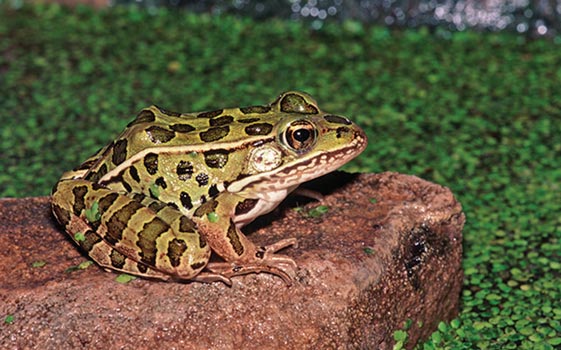
If there is clear ice on a lake you may be able to see frogs swimming under the ice. They need water that has enough oxygen for them to survive. These are normally the lakes and rivers that have fish. These frogs can absorb the oxygen through their skin and mucous membranes.
The tadpoles of green frogs regularly over winter for one year and transform to adult frogs their second year. The tadpoles are active all winter, but very slow.
Interested in amphibians and their winter habits? Learn more in the following books:
- "Amphibians and Reptiles in Minnesota" by John Moriarty and Carol D. Hall
- "The Ecology and Behavior of Amphibians" by Kentwood D. Wells
Archive image: "Rana pipiens" by Andy Kraemer is licensed under CC BY-NC 2.0
About the Author
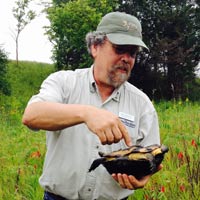
John Moriarty is the Senior Manager of Wildlife at Three Rivers Park District and has been with the Park District for 15 years. He has been involved in many of the wildlife restoration efforts and initiated the snake and butterfly efforts. John has led several projects to increase prairie habitat in the Park District. John likes exploring natural areas and looking for all types of plants and animals, but especially turtles.
Related Blog Posts
Frog Tongues — A Sticky Situation
By: Brandon Baker
The arrival of spring brings with it the call of frogs! Learn how these amazing creatures survive winter and find out the truth about frog tongues.
9 Things We Learned from the Medicine Lake Urban Turtle Project
By: John Moriarty
Where do spiny softshell turtles go after nesting on the beach at French Regional Park? How far do softshell, painted and snapping turtles travel in the water? Are they active in winter or affected by water quality? Find out what we learned during the Medicine Lake urban turtle project.
How Bats Survive Minnesota Winters
By: Katie Frias
Minnesota is home to seven species of bats, but they don't all approach winter the same way. Read on to learn how bats survive our coldest months of the year.
